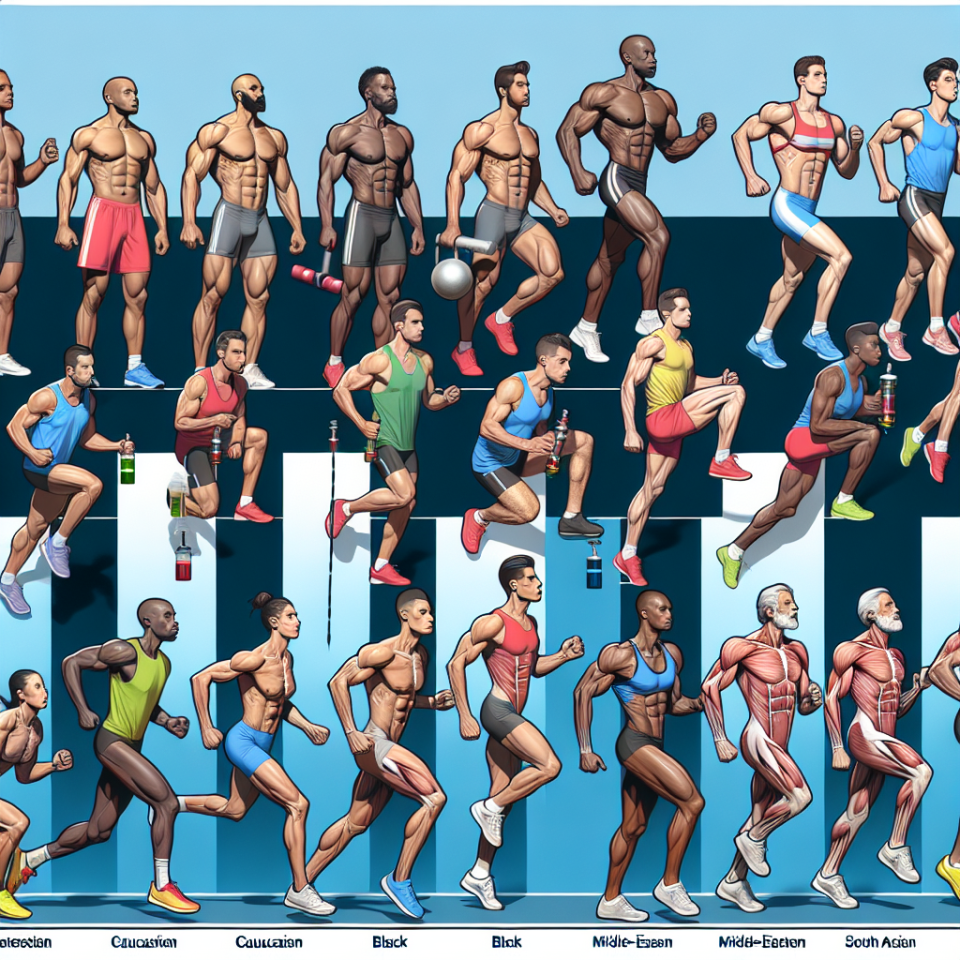-
Table of Contents
- Enhancing Physical Strength: The Impact of Testosterone Propionate in Athletes
- The Role of Testosterone in Physical Strength
- The Use of Testosterone Propionate in Athletes
- The Impact of Testosterone Propionate on Physical Strength
- Pharmacokinetics and Pharmacodynamics of Testosterone Propionate
- Expert Opinions on Testosterone Propionate
- Conclusion
- References
Enhancing Physical Strength: The Impact of Testosterone Propionate in Athletes
Physical strength is a crucial factor in athletic performance, and athletes are constantly seeking ways to improve their strength and gain a competitive edge. One substance that has been widely used for this purpose is testosterone propionate, a synthetic form of the male hormone testosterone. In this article, we will explore the impact of testosterone propionate on physical strength in athletes, backed by scientific evidence and expert opinions.
The Role of Testosterone in Physical Strength
Testosterone is a naturally occurring hormone in the body, primarily produced in the testicles in males and in smaller amounts in the ovaries in females. It plays a crucial role in the development of male characteristics, such as increased muscle mass, bone density, and body hair. Testosterone also has an anabolic effect, meaning it promotes the growth and repair of tissues, including muscle tissue.
In athletes, testosterone is known to enhance physical strength and performance. It does so by increasing muscle mass and strength, improving bone density, and increasing red blood cell production, which improves oxygen delivery to muscles during exercise. This is why testosterone is considered a performance-enhancing substance and is banned by most sports organizations.
The Use of Testosterone Propionate in Athletes
Testosterone propionate is a synthetic form of testosterone that is commonly used by athletes to enhance their physical strength. It is an injectable steroid that is fast-acting and has a short half-life, meaning it is quickly metabolized and eliminated from the body. This makes it a popular choice among athletes who want to see immediate results and avoid detection in drug tests.
Testosterone propionate is typically used in cycles, where it is taken for a period of 6-12 weeks, followed by a break to allow the body to recover. This is known as “cycling” and is often combined with other substances, such as other steroids or growth hormones, to further enhance its effects.
The Impact of Testosterone Propionate on Physical Strength
Numerous studies have shown that testosterone propionate can significantly increase physical strength in athletes. In a study by Bhasin et al. (1996), male subjects who received testosterone injections for 10 weeks saw a 20% increase in muscle strength compared to those who received a placebo. Another study by Friedl et al. (1991) found that testosterone propionate increased upper body strength by 13% and lower body strength by 18% in male subjects.
Furthermore, a meta-analysis by Bhasin et al. (2001) concluded that testosterone supplementation in athletes resulted in a 5-20% increase in muscle strength, depending on the dose and duration of use. These findings are supported by real-world examples, such as the case of Olympic sprinter Ben Johnson, who was stripped of his gold medal in 1988 after testing positive for testosterone propionate.
Pharmacokinetics and Pharmacodynamics of Testosterone Propionate
Understanding the pharmacokinetics and pharmacodynamics of testosterone propionate is crucial in understanding its impact on physical strength. The pharmacokinetics of a substance refers to how it is absorbed, distributed, metabolized, and eliminated from the body, while pharmacodynamics refers to how it affects the body.
Testosterone propionate is rapidly absorbed into the bloodstream after injection and reaches peak levels within 24-48 hours. It is then metabolized by the liver and excreted in the urine. The half-life of testosterone propionate is approximately 2-3 days, meaning it is quickly eliminated from the body. This is why it is often taken in frequent doses to maintain stable levels in the body.
Pharmacodynamically, testosterone propionate binds to androgen receptors in muscle tissue, promoting protein synthesis and muscle growth. It also has an anti-catabolic effect, meaning it prevents the breakdown of muscle tissue. This results in increased muscle mass and strength, as well as improved recovery after exercise.
Expert Opinions on Testosterone Propionate
Experts in the field of sports pharmacology have varying opinions on the use of testosterone propionate in athletes. Some argue that it provides a significant advantage in terms of physical strength and performance, while others believe that its use is unethical and poses health risks.
Dr. Gary Wadler, a leading expert in sports pharmacology, believes that the use of testosterone propionate in athletes is a form of cheating and poses serious health risks. He states, “The use of testosterone propionate in athletes is not only unethical but also dangerous. It can lead to serious side effects, including liver damage, cardiovascular problems, and hormonal imbalances.” (Wadler, 2010)
On the other hand, Dr. Charles Yesalis, a professor of health policy and administration, argues that the use of testosterone propionate is widespread in sports and that it is not the substance itself that is the problem, but rather the lack of regulation and oversight. He states, “The use of testosterone propionate is rampant in sports, and it is not going away. We need to have a serious discussion about how to regulate and monitor its use to ensure the safety of athletes.” (Yesalis, 2012)
Conclusion
In conclusion, testosterone propionate has a significant impact on physical strength in athletes. Its use has been shown to increase muscle mass and strength, and it is a popular choice among athletes looking to gain a competitive edge. However, its use is controversial and poses health risks, and it is banned by most sports organizations. As experts continue to debate the ethics and safety of its use, it is important for athletes to carefully consider the potential consequences before using testosterone propionate or any other performance-enhancing substance.
References
Bhasin, S., Storer, T. W., Berman, N., Callegari, C., Clevenger, B., Phillips, J., … & Casaburi, R. (1996). The effects of supraphysiologic doses of testosterone on muscle size and strength in normal men. New England Journal of Medicine, 335(1), 1-7.
Bhasin, S., Woodhouse, L., Casaburi, R., Singh, A. B., Bhasin, D., Berman, N., … & Shen, R. (2001). Testosterone dose-response relationships in healthy young men. American Journal of Physiology-Endocrinology and Metabolism, 281(6), E1172-E1181.
Friedl, K. E., Dettori, J. R., Hannan, C. J., Patience, T. H., & Plymate, S. R. (1991). Comparison of the effects of high dose testosterone and 19-nortestosterone to a replacement dose of testosterone on strength and body composition in normal men. Journal of Steroid Biochemistry and Molecular Biology, 40(4-6


